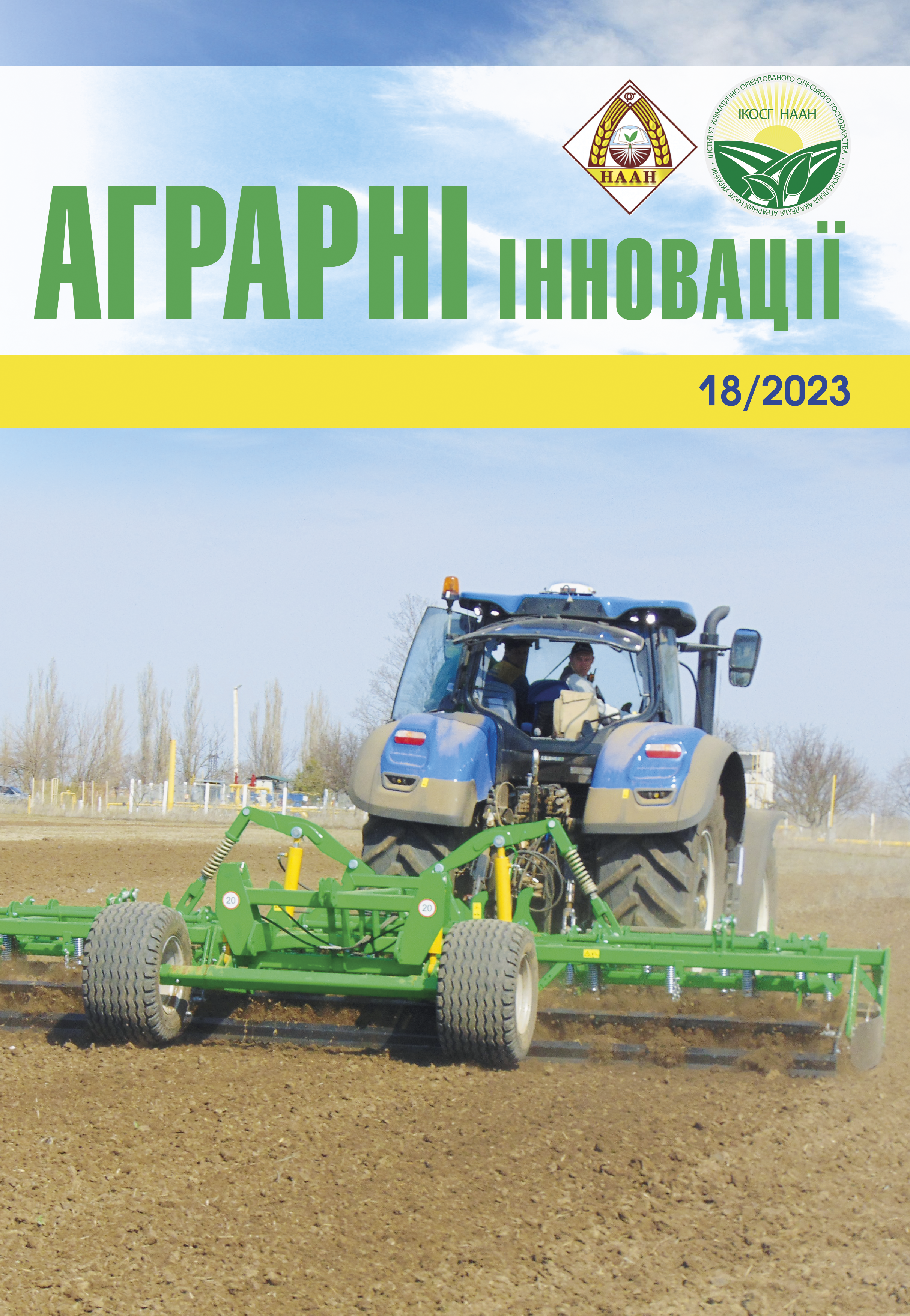PECULAIRITIES OF YIELD FORMATION FOR TABLE GRAPE VARIETIES
Abstract
The cultivation of table grapes in the region has a special economic significance due to the economically valuable food and dietary properties of table grapes and processing products. Purpose. The aim was to establish the features of yield formation of five table grape varieties and to determine the elements of the yield structure and the features of the formation of grape bushes of table varieties, to conduct an analysis of the influence of individual elements on market productivity. Methods. Table grape varieties Arkadiya, Nadezhda AZOS, Preobrazhenie, Dubovsky rozovyi, Rumeyka were used for research. Plantings are planted according to the planting scheme of 3.5 × 1.5 m. Repetition is threefold. Plots are placed consecutively, ten accounting bushes each. It was grown on drip irrigation in the subzone of the Northern Steppe of Ukraine. The climate is temperate-continental, characterized by clearly defined aridity. Results. During the period of active growth and the formation of a productive vine, an analysis of such an indicator as shoot length was performed to characterize the ontogenesis of the plant. It gradually grows even after the onset of commercial fruiting. Two factors that are significant for productivity are the faster linear growth of vegetative mass in the ontogeny of the second or third year of cultivation and the relative use of a share of this mass for the formation of marketable products. The relative importance of individual characteristics and their influence on yield per unit area was determined. Characteristics such as shoot length, shoot diameter, cross-sectional area, and its volume from the studied morphometric features did not significantly affect yield. The average length of the shoot and the ripe part of the bunch were already statistically significant in their effect. Among the signs directly related to the yield structure, all had a statistically significant effect, but the average weight of bunches and productivity per bush were more important. It was they who caused the excess in yield of three varieties Nadezhda AZOS, Preobrazhenie, and Dubovsky rozovyi. Findings. A significant increase in productivity was shown by three of the five studied varieties, namely Nadezhda AZOS, Preobrazhenie, Dubovsky rozovyi, which exceeded the other two varieties by such key indicators as the length of the shoot (partially) and the ripe part of the bunch from the morphometric indicators, the number of bunches, the average weight clusters and productivity from the bush. Productivity advantages are due to higher rates of growth and development of these varieties in the second or third year of cultivation. In the future, it is planned to conduct an analysis of the productivity of cultivated varieties under conditions of closed soil and an analysis of the quality of the obtained commercial products.
References
2. Aroosa K., Sharma M. K., Nowsheen N., Rifat B., Sundouri A. S., Saba B., Kouser J. Impact of Fertilizer and Micronutrients Levels on Growth, Yield and Quality of Grape cv. Sahebi. Current Journal of Applied Science and Technology. 2018. 27(5). Р. 1–9.
3. Brataševec K., Sivilotti P., Vodopivec B. Soil and foliar fertilization affects mineral contents in Vitis vinifera L. cv. rebula leaves. Journal of Soil Science and Plant Nutrition. 2013. 13(3). Р. 122–128.
4. Conde A, Neves A, Breia R, Pimentel D, Dinis LT, Bernardo S, Correia CM, Cunha A, Gerós H, Moutinho- Pereira J. Kaolin particle film application stimulates photo assimilate synthesis and modifies the primary metabolite of grape leaves. Journal Plant Physiology. 2018. 223. Р. 47–56.
5. Souza C. R., Maroco J., Santos T. et al. Control of stomatal aperture and carbon uptake by deficit irrigation in two grapevine cultivars. Agriculture, Ecosystems and Environment. 2005. 106. Р. 261–274.
6. Šuklje K., Antalick G., Meeks C. Grapes to wine: the nexus between berry ripening, composition and wine style. Acta Horticulturae. 2017. 1188. P. 43–50.
7. Kameneva N., Тkachenko О. Influence of preparations Biolan and Vympel for the crop and quality of grapes and wine from varieties Aligote and Rkatsiteli. Songklanakarin Journal of Science and Technology. 2019. 41(2). Р. 254–258.
8. Williams P. J., Cynkar W., Francis L. Quantification of glycosides in grapes, juices, and wines through a determination of glycosyl glucose. Journal of agricultural and food chemistry. 1995. 43. P. 121–128.
9. Wong D. Berry Sensory Analysis. A common language for describing maturity. Vineyard and winery management. 2015. 2. P. 54–58.






